Dec 24, 2025
Dec 24, 2025
The Loss of Inca Empire of Andes
Continued from Previous page
In the previous episodes, the major ancient civilizations of the world were dealt with briefly summarizing their history, socio-political and economic conditions, pantheon and mythology, including selected few popular legendary tales. Almost all of them have a long history comprising of different dynasties and empires including prolonged wars and even intercontinental conquests. The common feature of all of them remains that, barring the exception of the Indian civilization, they perished with the advent and onslaught of the Christianity and Islam during the last two millennia. Apart from the said major civilizations, many other relatively small civilizations such as Inca, Aztec, Erlitou, Norte Chico, Olmec, etc., too grew and perished in various parts of the world in different time span. Nonetheless they too were reasonably evolved civilizations before being lost with the cruel stroke of time. In the next few episodes, the author proposes to take up them to summarize their brief history, characteristic features and belief system.
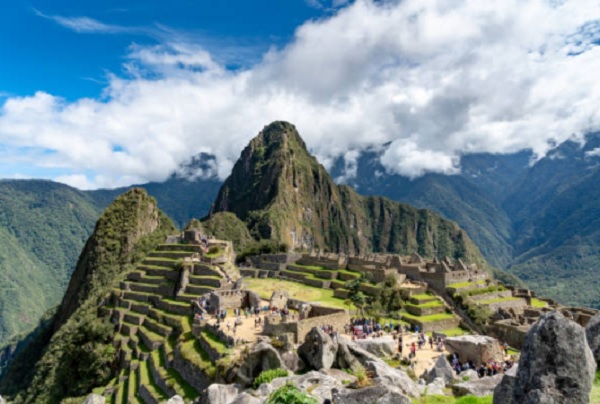
One such civilization is represented by the Inca or Incan Empire in the South America. It is believed to have arisen in the Peruvian highlands towards the end of twelfth or in early 13th century. The city of Cusco was the most important political, administrative and military centre of this empire during its peak glory. For about hundred years from 1438 to 1533, the Inca Empire had consolidated their position and influence over a large part of western South America, centred on the Andean Mountains, making use of both conquest and peaceful means. Then the empire comprised of what is today’s Peru, western Ecuador, western and south-central Bolivia, northwest Argentina, a large portion of Chile and the south-westernmost part of Colombia. However, the Spanish colonizers and missionaries started invasions and finally conquered it around 1572. The Inca system is believed to have worked without money and market; instead, it was basically a barter system with reciprocal exchange of goods and supplies.
History of Inca People
Historically, the Inca Empire is considered as the last leg of the thousands years of the old Andean civilizations in the South America. The Incas was preceded by two nearly contemporary empires in the Andes; namely, the Tiwanaku (300–1100 CE) that prospered around the Lake Titicaca between Peru and Bolivia in the Andes Mountains and the Wari or Huari (600–1100 CE) located near the city of Ayacucho in South-central Peru. Not much is known before this period and the aborigines in these areas were probably different nomadic tribes. The Wari people inhabited the Cuzco area for about 400 years and many of their attributes were assimilated by the later Inca Empire derived from the multi-ethnic and expansive Andean cultures. The Inca people largely represented a pastoral tribe in the Cusco region around the twelfth century. At its zenith, the Inca Empire had spread over Peru, western and south central Bolivia, southwest Ecuador and a large portion today’s Chile, north of the Maule River.
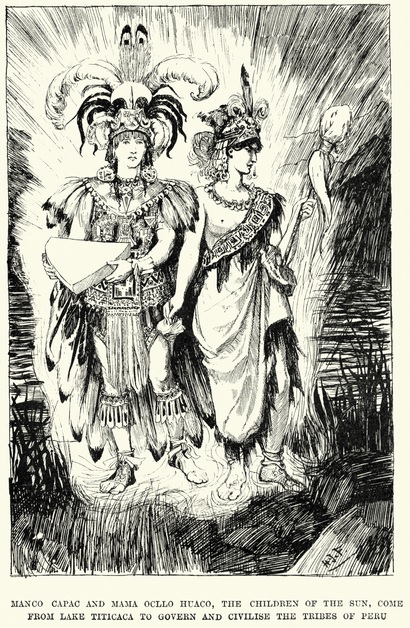 According to the popular Inca legend, Manco Capac was the founder of the Inca Empire and first ruler of Incas. Arguably, He and his sister-turned-wife Mama Occlo were the ones whose efforts led to the formation of the first Inca homes and establishment of the civilization in the small city-state of Cusco. Their son, Sinchi Roca, is said to be the second emperor or king of the Incas but there is not much clarity about the Inca successions. A considerable expansion of the empire was achieved during the time of Sapa Inca Pachacuti-Cusi Yupanqui around 1438 CE. Pachacuti and his son Tupac Yupanqui brought most of the modern day Peruvian territory under Inca control. Pachacuti is also believed to have brought in many reforms including reorganization of the kingdom into a central government with the emperor as head and four provincial governments with strong leadership for the better governance.
According to the popular Inca legend, Manco Capac was the founder of the Inca Empire and first ruler of Incas. Arguably, He and his sister-turned-wife Mama Occlo were the ones whose efforts led to the formation of the first Inca homes and establishment of the civilization in the small city-state of Cusco. Their son, Sinchi Roca, is said to be the second emperor or king of the Incas but there is not much clarity about the Inca successions. A considerable expansion of the empire was achieved during the time of Sapa Inca Pachacuti-Cusi Yupanqui around 1438 CE. Pachacuti and his son Tupac Yupanqui brought most of the modern day Peruvian territory under Inca control. Pachacuti is also believed to have brought in many reforms including reorganization of the kingdom into a central government with the emperor as head and four provincial governments with strong leadership for the better governance.
The aforesaid father-son duo was largely responsible for the expansion, strengthening and bringing in reforms during their regime. Machu Picchu, the famous 15th century Inca citadel, in the Eastern Cordillera of southern Peru is believed to have been built by Pachacuti. To gather information about the political organization, military strength and prosperity in the kingdom, he had evolved a good spy network. He even sent emissaries to the neighbouring rulers to accept his offer of friendship, an instrument of making them to accept Inca subordination and sovereignty, failing which military expeditions were undertaken to subdue them. In such case, the rival ruler was executed after the conquest and his children/heirs were usually brought to Inca land for proper education, training and indoctrination so that they regard Inca emperor with due reverence after being restored to their native land. Besides, their daughters were married to Inca nobilities to seal their future bonds.
After Pachacuti’s death in 1471 CE, his son Tupac Inca Yupanqui continued to perform his father’s unfinished job. His most significant conquest was subjugation of their toughest rival of the kingdom of Chimor at the Perivian coast. Tupac Inca was succeeded by his son Huayna Capac who conquered a significant territory of the modern day Ecuador to annex in his empire. Following these conquests, the Inca Empire represented an amalgamation of various languages, cultures and ethnic groups which were only loosely integrated. Consequently, all constituents and people were not uniformly loyal to the Inca emperor which became a significant cause of conflict among the Incas later on. The empire did not have any currency and coinage system; instead, the economy was based on the exchange and taxation of luxury goods and labour.
During the first half of the sixteenth century, troubles and decline started in the Inca Empire following the internal disputes of succession and external interventions by the Spanish conquistadors. It started with Spanish Francisco Pizarro and his kin reaching Inca land first time via Panama in 1526 CE and adjudged it a wealthy and prosperous land; he then took approval of the Spanish Queen in 1529 to conquer the region. Pizarro was designated by the Queen as governor and captain of all conquest of the Inca land. When the Spanish conquistadors returned to Peru in 1532 with adequate war preparation, the Inca Empire was besieged with the war of succession among the sons of Huana Capac and unrest in the newly conquered territories. Also the land was facing serious threats from the epidemics of smallpox, influenza, typhus and measles around the same time, and, in fact, Huana Capac and his designated heir and a large population had become casualties of the same epidemics. Although the number of men in the contingent led by Pizarro was small but they were well equipped with steel armour, long swords, and so on, while Inca people still used archaic weapons comprised of wood, stone, copper & bronze, etc.
The first armed conflict between the forces of Spanish led by Pizarro and the Inca victor of the succession civil war, Atahualpa, took place at Puna, near present-day Guayaquil in Ecuador on the Pacific Coast, while the next at Cajamarca was decisive. Earlier during the alleged peace talks, the latter had rejected the former’s proposal of accepting the rule of the Spanish King and conversion to Christianity. When the war broke out, the Spanish army with superior arms and weaponry dominated and defeated largely armed with inferior weapons or unarmed Inca army and King Atahualpa was captured. In subsequent period, the Spanish played the usual game of divide and deceit to capture more land and people, and Atahualpa was finally executed by them in August 1533. As it happened in other parts of the world too during conquests, many diverse ethnic groups ruled by Inca King too welcomed the Spanish invaders as liberators and many regional leaders actively cooperated with them. For the next about half-century, the Spanish conquerors remained mainly engaged in exploiting riches of the Inca Empire and converting people to Christianity.
Although for the names sake, the Spanish had allowed Manco Inca Yupanqui, Atahualpa’s brother, to rule but ultimately the city of Cusco was captured and claimed by Spanish and he retreated to mountains, established a small Neo-Inca state and the clan ruled there for over three decades. However, by 1572 the last Inca territory too was conquered and the ruler Tupac Amaru executed to abolish the Inca authority from the region. In subsequent period, various aspects of the Inca culture and pantheon were systematically targeted and destroyed by the Spanish conquerors and missionaries. People were forced to join Christianity, failing which many of them were tortured and killed. The impact of epidemics like the smallpox was even more devastating, followed by Typhus and Influenza, taking a heavy toll. These illnesses were not known in South America before the arrival of the Europeans. These developments and onslaughts of Christianity led to the destruction of the Inca Empire, their culture and pantheon.
The languages used by the Incas were Quechua, Aymara, Puquina and Mochica, the first one being more common. In many areas, men and women had a complementary working relationship but the usual activities engaging the Inca men were plowing, weeding, harvesting, bringing the firewood, building houses, participating in combats, herding and rearing llama and alpaca, and weaving and spinning, etc. On the other hand, the women did cooking, brewing chichi, spinning, weaving, bearing and looking after children, preparing fields for cultivation, planting seeds, weeding, hoeing, herding and carrying water, etc. The Incas had traditional economy and taxpaying was usually in the form of the public and military service obligations. The state had no separate codified laws and judiciary system; instead, the local power holders regulated people’s conduct and behavior with own edicts. Architecture was highly developed with textiles reflecting many architectural motifs. The traditional units of measurement were body parts such as thumb, fingers and thatki (one pace). The ceramics were painted using polychrome techniques abundantly displaying motifs of animals, birds, felines, geometric patterns, and so on. Inca people treated coca plants as sacred and its leaves were used for the religious and health uses. The common Inca weaponry was hardwood spears, arrows, javelins, slings, bolas, clubs, maces, etc., mostly comprising of wood, stone, copper and bronze stuff.
Inca Religion and Deities
Inca people believed in polytheism and reincarnation, who worshipped numerous gods and goddesses associated with different functions and phenomenon. According to their belief, the transmission to next world was fraught with many hardships. For illustration, the spirit of dead required a long journey which was possible with the assistance of the black dog capable of seeing through the dark. The spirits who succeeded the onerous journey would land in the earthly paradise of flower-covered fields and snow-capped mountains. For these beliefs, Inca people were afraid of death by burning and body of the dead was never incinerated lest it would cause deformation and loss of vital force necessary for their safe passage to the after world.
The most of the ancient world religions believed that the world was created by one God but Inca mythology suggests involvement of several gods in creation and fertility of the universe. The majority of the world’s religions speak of a single God who created the universe, but in Inca mythology, many deities were involved in the creation of the cosmos. For instance, different gods were responsible for the creation of the sky, earth and netherworld. Among the prominent Inca gods were Viracocha, Inti, Coniraya, Supay, Catequil, Piguerao, Urcaguary and Ekkeko, etc. Similarly, the prominent goddesses were Pachamama, Mama Cocha, Mama Quilla, Mama Ocllo, Chasca, Cavillace, Copacati, Sachamama, Mama Allpa, Mama Sara, Mama Kuka and Axomama, etc. Of the aforesaid ones, about a dozen more important deities are briefly described here.
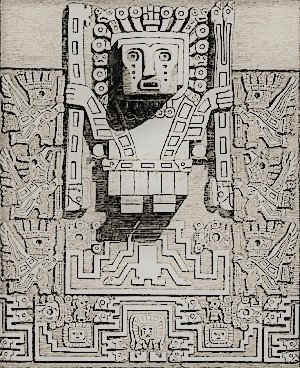 Viracocha (or Pachacamac): Viracocha is the chief god and the most important deity of the Inca people and also the main force behind all creations. He was the one who created early gods, put in place the sun, moon, stars and planets and designed the heaven. He is often shown wearing the sun for a crown, thunderbolts in his hands and tears oozing out of eyes symbolizing rains. He is believed to be the god who created time, commanded the sun to move over the sky and granted the civilization to grow in the world. When he commanded the sun to move over the sky, time itself was simultaneously created, allowing for the rise of civilization. In short, he is seen as the most important deity who was responsible for the creation of all things, or the substance from which things were created.
Viracocha (or Pachacamac): Viracocha is the chief god and the most important deity of the Inca people and also the main force behind all creations. He was the one who created early gods, put in place the sun, moon, stars and planets and designed the heaven. He is often shown wearing the sun for a crown, thunderbolts in his hands and tears oozing out of eyes symbolizing rains. He is believed to be the god who created time, commanded the sun to move over the sky and granted the civilization to grow in the world. When he commanded the sun to move over the sky, time itself was simultaneously created, allowing for the rise of civilization. In short, he is seen as the most important deity who was responsible for the creation of all things, or the substance from which things were created.
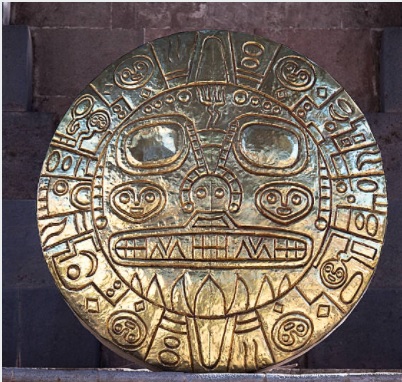 Inti: He was the sun god and patron deity of the holy city of Cusco in the Inca Empire. He is also the second most important deity after Viracocha in the Inca pantheon. There are several versions of his relationship with Viracocha as being brother or son but the most acceptable version relates Inti as the son of the latter. Moved over the sky and permanently stationed there, he was responsible for providing light and warmth to the earth, and hence also considered as the ‘Giver of Life’. He is believed to have married his older sister Mama Quilla; the two together were considered as benevolent gods and together had two children, who were sent to earth to start the Inca civilization. Inti used to receive large offerings from Inca people, especially in gold / silver and animals, and his temples were prevalent all over the Inca empire.
Inti: He was the sun god and patron deity of the holy city of Cusco in the Inca Empire. He is also the second most important deity after Viracocha in the Inca pantheon. There are several versions of his relationship with Viracocha as being brother or son but the most acceptable version relates Inti as the son of the latter. Moved over the sky and permanently stationed there, he was responsible for providing light and warmth to the earth, and hence also considered as the ‘Giver of Life’. He is believed to have married his older sister Mama Quilla; the two together were considered as benevolent gods and together had two children, who were sent to earth to start the Inca civilization. Inti used to receive large offerings from Inca people, especially in gold / silver and animals, and his temples were prevalent all over the Inca empire.
Coniraya: He was the male Moon God, associated with the fertility and creation of life. According to a mythical legend, as Coniraya wandered over the land, various species of plants and animals were created. He also had a dominion over the agriculture, and he is the deity who helped the farmers to learn about the irrigation of their fields. Another legendary tale relates him with the virgin goddess Cavillaca. He is believed to have deposited his sperm into the fruit of the Lumca Tree, which was unknowingly eaten by Cavillaca. Consequently, she became pregnant and gave birth to a son. However, out of the sheer shame she ran away to the coast of Peru where both of them turned into rocks.
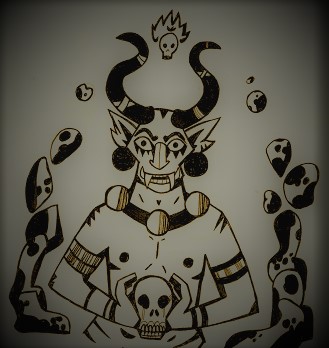 Supay: He was the god of the dead and the ruler of Ukhu Pacha, the Incan underworld, as well in-charge of the race of demons and evil spirits. With the advent of Spanish colonization, Christian priests started using the name "Supay" to symbolize the Devil but the indigenous people continued to invoke him hitherto fore in begging not to harm them. Now people (the Catholic aborigines) in some indigenous areas of Peru and Bolivia, refer to the devil by this nomenclature.
Supay: He was the god of the dead and the ruler of Ukhu Pacha, the Incan underworld, as well in-charge of the race of demons and evil spirits. With the advent of Spanish colonization, Christian priests started using the name "Supay" to symbolize the Devil but the indigenous people continued to invoke him hitherto fore in begging not to harm them. Now people (the Catholic aborigines) in some indigenous areas of Peru and Bolivia, refer to the devil by this nomenclature.
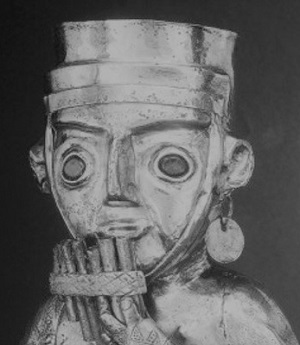 ApuIllapu(or Illapa): As the god of weather, lightning and thunder, he was one of the most popular gods among the Inca people. Illapa was believed to contain the Milky Way in a jug and used it to create rain. He was mostly depicted as a man in shining clothes, carrying a club and stones. He was also the main god of the Kingdom of Qulla after which the Qullasuyu province of the Inca Empire was named. During the times of drought, the Inca people traditionally used to tie black dogs to starve with hunger in belief that god Illapa would then take pity and send therain to get riddance of the drought spell.
ApuIllapu(or Illapa): As the god of weather, lightning and thunder, he was one of the most popular gods among the Inca people. Illapa was believed to contain the Milky Way in a jug and used it to create rain. He was mostly depicted as a man in shining clothes, carrying a club and stones. He was also the main god of the Kingdom of Qulla after which the Qullasuyu province of the Inca Empire was named. During the times of drought, the Inca people traditionally used to tie black dogs to starve with hunger in belief that god Illapa would then take pity and send therain to get riddance of the drought spell.
Manco Capac: He is an important ancestor and one of the deities from the gods’ descent, well known for his wisdom and courage. He was sent to the earth by the gods to set up civilization and become the first king of the Inca people. He is believed to be one who taught people in various disciplines such as how to grow plants and crops, make weapons and implements, work together in close knit society, share resources for the community living and the Gods.
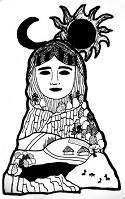 Pachamama: She was the goddess of earth and wife of Viracocha closely associated with seasons, fertility, plantation and harvesting. Along with Viracocha, she was among the primordial deities of the Inca pantheon responsible for the sustenance of the life on earth. As the goddess of earth, the cult of fertility of crops was ascribed to her and, accordingly, there was a custom of making large offerings to her lest she might not shower grace for a prosperous crop. People used to give her offerings of coca leaves and beer with prayers for the abundant agricultural produce. In her capacity as an earth goddess, she was also associated with the mountains, and was known to cause earthquakes. The Inca people believed that the problems on earth arose due to people extracting too much from the nature, thereby putting goddess Pachamama under a great strain.
Pachamama: She was the goddess of earth and wife of Viracocha closely associated with seasons, fertility, plantation and harvesting. Along with Viracocha, she was among the primordial deities of the Inca pantheon responsible for the sustenance of the life on earth. As the goddess of earth, the cult of fertility of crops was ascribed to her and, accordingly, there was a custom of making large offerings to her lest she might not shower grace for a prosperous crop. People used to give her offerings of coca leaves and beer with prayers for the abundant agricultural produce. In her capacity as an earth goddess, she was also associated with the mountains, and was known to cause earthquakes. The Inca people believed that the problems on earth arose due to people extracting too much from the nature, thereby putting goddess Pachamama under a great strain.
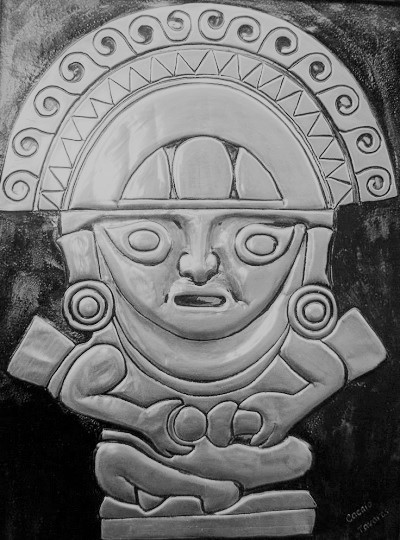 Mama Quilla (also Killa): The goddess Mama Quilla was the wife of Inti and the popular Moon goddess. She presided over the marriage and menstrual cycle, and was specially known for the protection of the women: therefore, the women were ones who worshipped her most. The Inca people had a belief that the lunar eclipse was a time when a mountain lion or serpent was attacking their much-loved Mama Quilla. Hence to defend their beloved goddess, they attempted to scare away the beast by throwing weapons and gesturing wildly at it with a lot of noise. They thought if the beast would succeed in its design, the whole world would be engulfed with darkness. The lunar cycle helped them to calculate the time, and plan their rituals and festivities. Usually, every sun temple had a statue dedicated for the worship of this favourite goddess.
Mama Quilla (also Killa): The goddess Mama Quilla was the wife of Inti and the popular Moon goddess. She presided over the marriage and menstrual cycle, and was specially known for the protection of the women: therefore, the women were ones who worshipped her most. The Inca people had a belief that the lunar eclipse was a time when a mountain lion or serpent was attacking their much-loved Mama Quilla. Hence to defend their beloved goddess, they attempted to scare away the beast by throwing weapons and gesturing wildly at it with a lot of noise. They thought if the beast would succeed in its design, the whole world would be engulfed with darkness. The lunar cycle helped them to calculate the time, and plan their rituals and festivities. Usually, every sun temple had a statue dedicated for the worship of this favourite goddess.
Mama Occlo: Mama Occlo was yet another important goddess associated with fertility and wisdom who was responsible for making the people civilized, enabling women to learn weaving cloth and men for building the houses. She was also considered a fertility Goddess who had founded the Inca capital Cuzco with her husband Manco Capac. According to a legend, Mama Occlo gave her husband a golden staff (rod) with a condition that wherever he would succeed in sinking the staff into the ground in one push, he should build a temple to the sun. Once this feat was achieved, Manco Capac and Mama Ocllo called the people in a congregation at Cuzco, and Mama Ocllo taught the women there about the weaving of clothes and harvesting the crops.
Mama Allpa: She was the earth goddess, associated with fertility of both Inca people and the land where they lived. Due to her association with nourishment of life, she was depicted with multiple breasts and attributes. She looked after the harvests and nourished everything with her numerous attributes. For these reasons, at times, she is compared with the Mesopotamian goddess Ishtar and Greek Artemis.
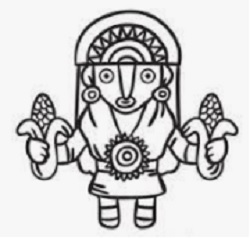 Mama Sara: Her name literally means “Maize Mother” and she was the goddess of grains and fertility. As the crop of maize represented staple diet of the Inca people, she was synonymised with it. As a stick of maize developed multiple growths, people thought it looked like the head and limbs of Mama Sara. Traditionally, many Inca people would dress the maize like a doll in reverence, treating it as the manifestation of Mama Sara.
Mama Sara: Her name literally means “Maize Mother” and she was the goddess of grains and fertility. As the crop of maize represented staple diet of the Inca people, she was synonymised with it. As a stick of maize developed multiple growths, people thought it looked like the head and limbs of Mama Sara. Traditionally, many Inca people would dress the maize like a doll in reverence, treating it as the manifestation of Mama Sara.
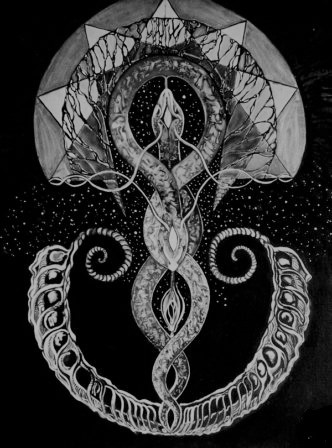 Sachamama: It literally means“Mother Tree”, Sachamama was the serpent goddess of the forest assuming the shape of a snake with two heads. According to Inca legends, she grew so large that she would not move remaining still on the forest floor in a single spot for a very long period of time. Due to her inactivity, even vegetation would grow on her body giving impression to the passer-by as if a fallen old tree is lying there. Therefore, if any unsuspecting person got too close, she would even devour him. According to a folktale, Sachamama would move once in hundreds years and her movements then caused undulations leading to the destruction of trees and a large jungle area.
Sachamama: It literally means“Mother Tree”, Sachamama was the serpent goddess of the forest assuming the shape of a snake with two heads. According to Inca legends, she grew so large that she would not move remaining still on the forest floor in a single spot for a very long period of time. Due to her inactivity, even vegetation would grow on her body giving impression to the passer-by as if a fallen old tree is lying there. Therefore, if any unsuspecting person got too close, she would even devour him. According to a folktale, Sachamama would move once in hundreds years and her movements then caused undulations leading to the destruction of trees and a large jungle area.
In some cases, various myths and accounts of the Inca gods and goddesses present conflicting accounts. For instance, Pachacamac is usually taken as another name of Viracocha but in some versions the two are depicted as different gods. In another version, Pachacamac is identified with Manco Capac who created the first man and woman on earth. Another legend talks about Kon, first born of Inti and Mama Quilla, having created first race of humans, gone tyrannical and later replaced by Pachacamac. Catequil was the storm god; Urcuchillay brought good fortune to people; AyarCachi caused earthquakes; Kuychi was rainbow god associated with fertility; Chasca was goddess of the dawn and twilight. The majority of goddesses and some gods in the Inca pantheon represented fertility and abundance. Inca people offered the sacrifices of precious articles and goods as also animal sacrifice, particularly llamas, to please these deities for own plentiful and prosperous living.
Inca Mythological Legends
The Inca believed in the existence of three different realms, namely, the sky or Hanan Pacha, inner earth or Uku Pacha and the outer earth or Cay Pacha. The term Pacha has different meaning and connotations among Incas. Ordinarily, the literal meaning of this term is taken as the “world” but in other contexts it is also interpreted as the whole cosmos or specific time span. The upper realm or Hanan Pacha included the sun, moon, stars, all other planets and constellations, particularly the milky way. The realm was inhabited by various gods and goddesses. The Kay Pacha was equivalent to the earth, the perceptible world, where all human beings, animals and plants lived. The realm was believed to be always under turmoil due to the rivalry and struggle between the Hanan Pacha and Ukhu Pacha. The Ukhu Pacha was somewhat akin to the underworld referred to in many Western civilizations associated with the dead as also new life. Most Inca legends were orally known and were later documented during the Spanish regime. A few popular Inca mythical tales are briefly summarized in the following paragraphs.
1. Inca Creation Myth
According to a legend, the Andean god Viracocha initially created a universe that had no light and was only inhabited by giants who so often disobeyed him. Therefore, unhappy and annoyed with this situation, god Viracocha produced torrential rains for several days which led to devastating flood. Consequently, giants were destroyed from the earth. Then he made yet another effort to procreate fresh life that could be akin to his choice and liking. Consequently, the human beings were created; the sun, moon and stars were placed in the sky as a gift of light to the civilization. Next thing done by Viracocha was to dispatch his sons to start life for the harmonious and peaceful living and by creating ideal conditions for the harvest too. But with the passage of time, several men turned hostile and started making mockery of the god Viracocha’s creation. Then he introduced the system of punishment to such people by turning them into stones, which sent across the message that the kind and generous Viracocha had the power to castigate them too for their misconduct.
2. Legend of the Ayar brothers
There are four different legends about the Inca civilization. According to the most popular tale, after an immense flood, Tici Viracocha of Colina de las Ventanas in Paqariq Tampu entrusted the task of creation to his four sons and four daughters, who emerged from a cave known as Paqariq Tampu. The four young couples by name were Ayar Manco and Mama Ocllo, Ayar Cachi and Mama Cora, Ayar Uchu and Mama Rahua, and Ayar Auca and Mama Huaco; Manco assumed the group’s leadership and was re-designated as Manco Camac with the mission to find a fertile land to establish a village in the valley of Cuzco. While still on way to this mission, Manco and Ocllo gave birth to their son Sinchi Roca and the group continued their journey.
However, some dispute arose among the brothers midway, and Ayar Cachi, the most powerful and cunning among the brothers was asked to return to the cave. As soon as he and his wife entered the cave, of Pacarina, the exit was sealed with a rock to ensure that he could never leave the cave. The remaining three brothers resumed journey on way to Mount Huanacauri, where they found a stone idol to which everyone except Ayar Uchu paid reverence. The latter jumped behind the statue and was instantly petrified. The remaining two brothers continued their trip but Ayar Auca too was petrified on committing similar mistake. Ayar Manco aka Manco Capac was the only brother who could reach the fertile land where he sank his golden staff in the ground and together with Mama Occlo founded Cusco, the future capital of Inca Empire.
In the second creation myth, Manco Capac and Mama Occlo emerged from the depth of Lake Titicaca to establish the city of Cuzco under the orders of god Inti. In yet another myth, the sun god Inti himself carried out the plan along with his wife to create Inca civilization. According to fourth and last myth, the sun god had sent Manco Capac and Occlo along with the special golden staff (rod) to find a place for the civilization. The golden staff sank in the ground at Cuzco and, accordingly, the civilization was established there.
3. Animals of Inca Mythology
Like many other civilizations, the Inca people too were heavily influenced by the local animal populations, which were abundantly used as food, clothing, transportation as also for some religious and cultural activities. Several myths were attached with the animals or the mix of animals and humans, and their interactions with Inca gods. At least three animals namely dogs, foxes and bears have been closely associated with human beings. The dogs were frequently domesticated for the hunting and scavenging but rarely associated with religious rites and rituals. On the other hand, foxes were often considered to be cunning and tricky; the Inca mythology has many tales of even gods being tricked by foxes. Though there was only species of bear found in South America, the story of the Bear’s wife and children found a popular place among Inca people. Many Andean people believed that the bears had the sexual habits of human beings, hence girls were specially cautioned to stay away and be careful from the risk of “bear rape”.
In one mythical tale, a bear disguised himself as a man in one human colony, lured a beautiful girl and ultimately took her to his cave. There he detained her in the cave, and constantly fed and took care of her. With the passage of time, she bore two children from him, which were half bear and half human in attributes. One day, the girl succeeded in escaping from the cave along with both children and returned to the human society. The villagers gave the bear children to the town's priest who subsequently made several attempts to kill the half bear children by throwing them off the cliff and high building, abandoning them in the ravine, and sending officers to kill them. During this entire melee, the younger bear child was killed but the older one succeeded in beating all such trials. Finally, he was made to fight a damned soul, whom too he defeated and saved from damnation. In return, the soul gave the bear child his entire estate and wealth. At the end, the fully grown bear man left the human society as a white dove. This story is also used to synonymise a Native American's plight against the Hispanic society after the Spanish conquest.
End Note
Like many other civilizations of the past, the beautiful Inca people too became the victims of colonization, and mass killing and conversion by the Spanish conquerors and Christian crusaders of the time. The Inca civilization was unique in a way that it lacked many of the features of the civilizations of the old world. Yet surprisingly, even without the use of wheel, draft animals, knowledge of iron or a formal system of writing, they were able to build one of the glorious empires of the human history. The 15th century citadel Machu Picchu is living monument as an illustration of their architectural knowledge and abilities. Alas! The human greed for more riches and lust for power has caused so much damage and destruction to the human history and civilization.
Continued to Next Page
Images (c) istock.com and other sources.
05-Sep-2021
More by : Dr. Jaipal Singh